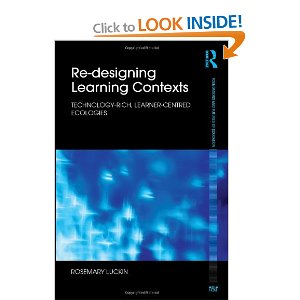 Last week we held the 2nd in the series of events jointly hosted by London Knowledge Lab and Pearson. This event made me think back to when I first studied AI, some years ago, I loved the fact that it is an interdisciplinary subject that combines psychology, computer science, linguistics, philosophy …. I also loved the fact that even then it was full of promise. Coming from an Education background I could see straightaway that I wanted to know more about how AI and education could be combined. I joined the AIED community and enjoyed my research but there seemed little public appetite for AI with respect to Education. But now AI is everywhere and there is real interest in how AI can improve and support teaching and learning. And here tonight we are going to take a very practical approach and come up with ideas about how AI can address some of the important challenges within our education system. So how might AI enrich education?
Last week we held the 2nd in the series of events jointly hosted by London Knowledge Lab and Pearson. This event made me think back to when I first studied AI, some years ago, I loved the fact that it is an interdisciplinary subject that combines psychology, computer science, linguistics, philosophy …. I also loved the fact that even then it was full of promise. Coming from an Education background I could see straightaway that I wanted to know more about how AI and education could be combined. I joined the AIED community and enjoyed my research but there seemed little public appetite for AI with respect to Education. But now AI is everywhere and there is real interest in how AI can improve and support teaching and learning. And here tonight we are going to take a very practical approach and come up with ideas about how AI can address some of the important challenges within our education system. So how might AI enrich education?
 For me the important thing is to look for ways in which artificial intelligence and human intelligence can be combined in complimentary unions.
For me the important thing is to look for ways in which artificial intelligence and human intelligence can be combined in complimentary unions.
For example, how about a system that collects data about classroom interactions between teachers and learners, learners and learners and learners and technology – a learner could carry this with them as as part of their pers onal computing device as they attend different classes about maths, geography or English etc. The data collected by the system would be subjected to a series of AI analysis methods that would generate outputs that reflect individual learners’ metacognitive development and suggestions about how this could be improved. Teachers would concern themselves with teaching the specific subjects and the AI technology would link these together and provide invaluable information about one of those all important 21st Century skills.
onal computing device as they attend different classes about maths, geography or English etc. The data collected by the system would be subjected to a series of AI analysis methods that would generate outputs that reflect individual learners’ metacognitive development and suggestions about how this could be improved. Teachers would concern themselves with teaching the specific subjects and the AI technology would link these together and provide invaluable information about one of those all important 21st Century skills.
Or how about taking advantage of the fact that there is now strong evidence to demonstrate the effectiveness of well designed one-to-one tutoring systems that use AI techniques to provide individualized tutoring to a learner. This kind of tutoring could be used to great effect with learners who are struggling and whose parents can’t afford to pay for a home tutor to make sure the child gets into a good school (or annex). It could be funded using pupil premium funds and might help to ‘level the playing field’ a little.




